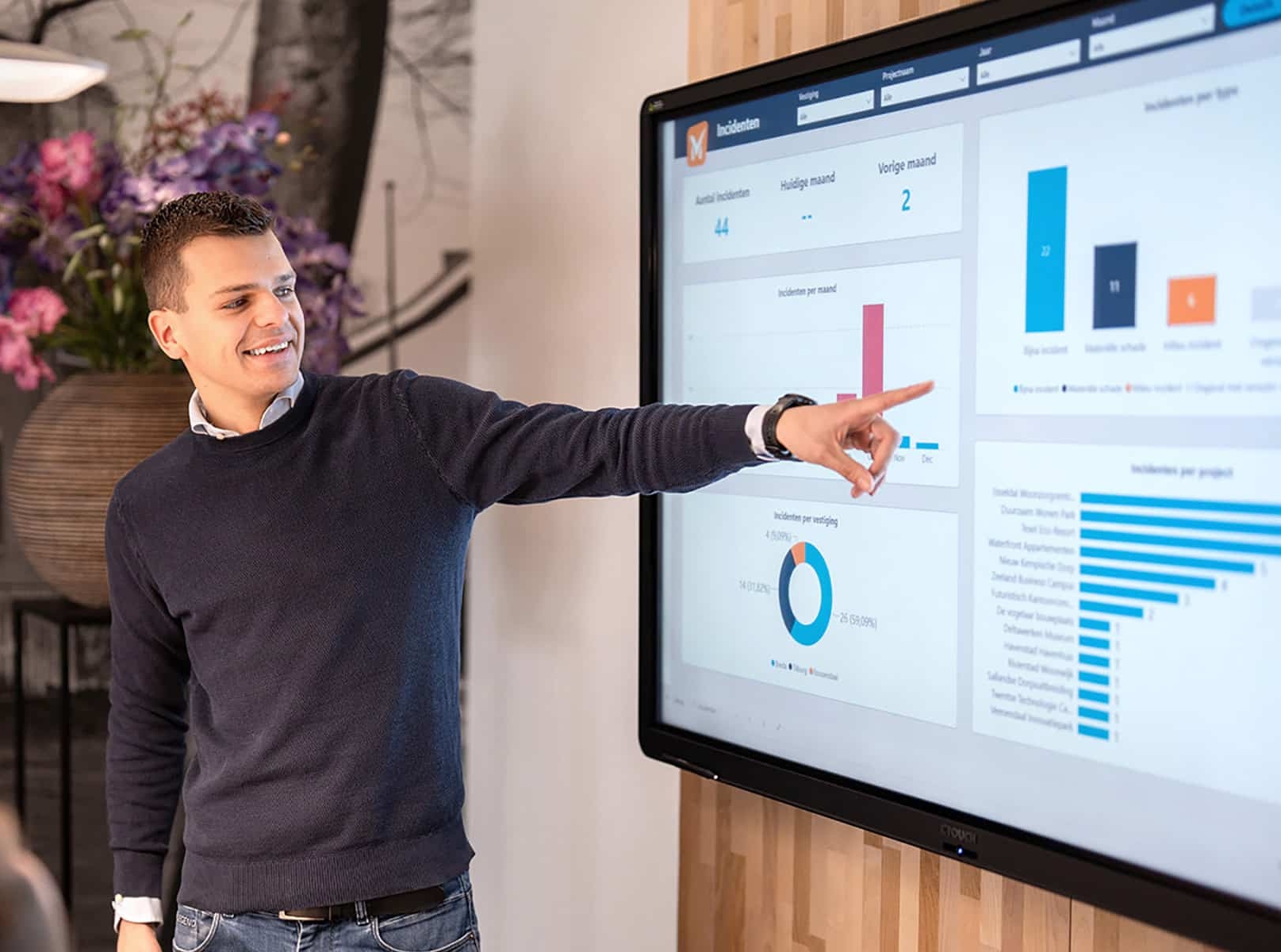
Optimizing project work
Process optimization is not higher mathematics. Yet in the daily hectic of many organizations, too little structural attention is paid to it. As a result, working methods often remain unchanged, even though we know they could be more efficient. Especially in project-oriented work, this can lead to a proliferation of forms, documents and data. The result: errors in execution, incomplete registration and poor project evaluation.
It can be different with the right digital support, standardization and integration into your existing information structure.
Optimizing project processes: from chaos to structure
In the construction industry (and other project-based environments), many things must be carefully recorded. Consider:
- Quality and safety inspections
- Material consumption
- Deviation reports
- Hourly records
- Procurement and supplies
During a project, these intermediate results must remain transparent. Not only to keep a grip on the execution, but also for financial completion and evaluation. So it is crucial that forms are filled out correctly, linked to the right projects and available centrally for analysis.
Improving information literacy with smart digitization
An important starting point in optimizing administrative processes is to work with a common data set. In this case, a unique project number was used as the key, taken from the ERP system. By including this number in each digital form, data could later be easily filtered and reused for reports and dashboards.
In practice, this number was not always filled in on paper or separate forms. This created an incomplete picture of the project status. By making the project number mandatory in digital forms -as a dataset field- this problem was structurally solved.
Process optimization with digital forms and data sets
ERP systems are often not suitable or too complex for use on the construction site or project site. Therefore, the choice was made to use digital forms linked to a central data set. When starting each form, the correct project number had to be selected first. This allowed automatic linking:
- The project address
- The responsible employees (such as project manager or KAM manager)
- The right workflow for processing and approval
This standardization ensured higher data quality, fewer errors and a direct link between registration and analysis. Workflows could automatically engage employees based on the form type or specific conditions, which provided more control over the process and faster processing.
Live insight: from registration to real-time dashboards
All project data was stored centrally in the ERP system and in LeanForms – with the dataset as the connecting factor. Thanks to a Power BI connection, project progress could be monitored live via dashboards. Discussions and evaluations now took place based on up-to-date information instead of manual overviews.
The example from the construction industry shows that process optimization does not have to be complex. This approach is easily applicable in any project-based organization that works with registration forms and needs structured information provision.
Benefits of process optimization with LeanForms
- Standardized registration forms
- Better data quality through mandatory datasets
- Faster processing via automated workflows
- Link to ERP or analytics platforms such as Power BI
- Real-time insight into project progress and deviations
Also getting started with process optimization?
LeanForms helps organizations digitize and structure their processes. Our forms app can be set up flexibly and connects easily to existing systems. Whether you work in construction, production or services: good information provision starts with smart, reliable registration.
Want to know how LeanForms can help your organization optimize operations? Contact us or request a demo – we’d love to think with you.
Want to know more? Get in touch
Do you have questions or are you curious how LeanForms can support your organization? We are ready to answer all your questions! Get instant specialized advice on the best solution for your specific situation.
Related items

Advanced workflows step by step
Digitization does not stop at replacing paper forms with a digital alternative. The real gain comes when processes become smarter. Workflows play a key role in this: By setting up digital forms intelligently, the system automatically streamlines the follow-up based on the answers. This gives your organization grip, speed and peace of mind and makes digitization work for you.

Guide to optimizing processes
Process optimization as a continuous improvement process. Process optimization is a continuous improvement process that not every organization is proactively working on yet.

RI&E: From obligation to dynamic tool
Preparing a risk inventory and evaluation (RI&E) has been a legal requirement for some time, but despite this, many companies struggle to set up their RI&E correctly.

The digital workplace, organizing with 5S
One of the methods within LEAN is the 5S Workplace Inspections, better known as 5S. It is often used to establish and maintain a tidy and orderly physical workplace.
